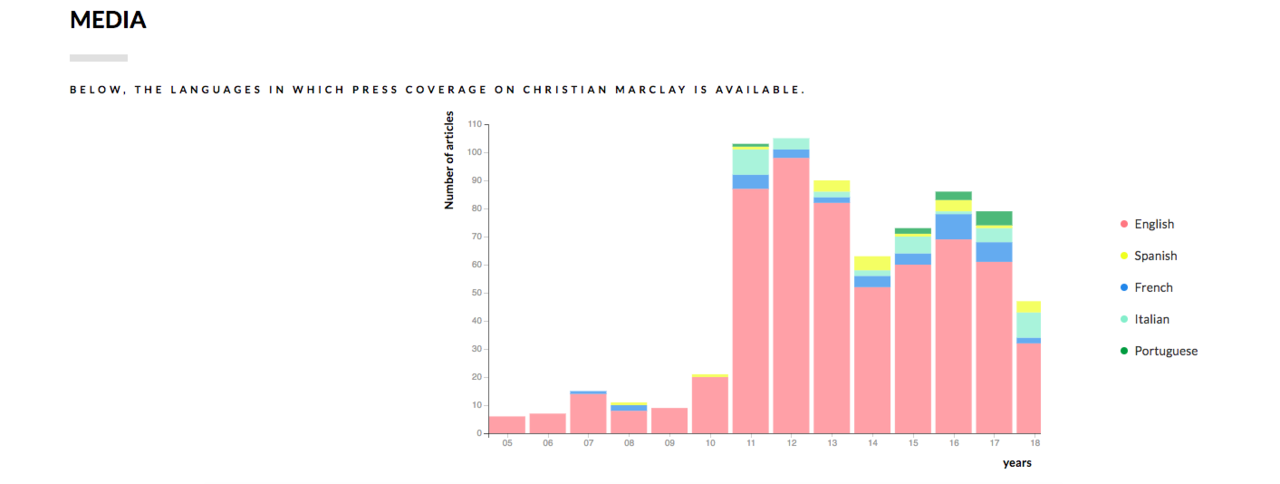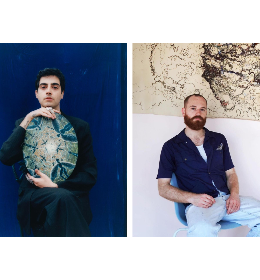When it comes to assessing the importance of an art prize in an artist’s career, the path led by the artist following on from an award is often telling. The world’s top art prizes — the Golden Lion at the Venice Biennale and the Turner Prize — have notably helped artists gain international recognition, as well as attain record prices. According to the Guardian, Damien Hirst’s prices increased by 27% after he was awarded the Turner Prize in 1995. Similarly, prices for works by Gilbert & George or Anish Kapoor doubled after their victories.
In terms of online visibility — a sign of public popularity — the benefits of winning a prize like the Golden Lion are very clear. Google researches associated to artist Anne Imhof, for instance, have peaked after her win at Venice. Prior to that, they also peaked during her Nationalgalerie show in Berlin.

This is also illustrated by the impact of the 54th edition of the Biennale on two different artists. That year, Franz West was awarded the Golden Lion for Lifetime Achievement, whilst Christian Marclay won the Golden Lion for the Best Artist of the international exhibition. As the graphs below – from the Artist Profiles of these two major players in Contemporary creation – show us, the after-effects of these awards influence the artists’ visibility just as much as their popularity:

Franz West — Auction

Other awards — including the Deutsche Bank artist of the year, the Abraaj Group Art Prize, or the Jameel Art Prize — have also proved to be real career accelerators.
In 2016, artist Basim Magdy (born in Assiut, Egypt, in 1977) was named the Deutsche Bank’s “Artist of the Year”, two years after being awarded the Abraaj Group Art Prize in 2014. Nevertheless, when in 2015 one of his works was acquired by the MoMA — an important moment for the artist — Magdy argued that it had “more to do with the progress of my career as a whole — prizes being part of it.”
“This being said, naturally one of the outcomes is that [winning a prize] brings more interest by collectors in the winning artist's work as part of a growing career. Most knowledgeable collectors don't just buy the work of an artist because he/she won a prize, but out of admiration and following their work for years,” he adds. According to Magdy, “prizes are important but they shouldn't be the scale according to which the quality of an artist's work is judged. There are many fantastic artists who have never won a prize.”
If prizes are a means by which artists gain credibility, they’re — perhaps more than anything else — a major platform for their work to be seen by a larger audience. Collectors, on their part, are mostly aware of an artist’s work before they are awarded a prize. “From a realistic point of view, you only receive a respectful art award once your work has been shown internationally and extensively,” Magdy adds.

Untitled (2014, Paper, ink) by Ghulam Mohammad
For galleries, however, a represented artists winning a major award has a very clear impact on business. For instance, Abid Merchant, director of Sanat Initiative, has seen a surge of interest in the work of artist Ghulam Mohammad since he won the Jameel
Prize 4 in 2016: “We've seen a significant rise in the demand of his works and a notable number of important collectors both within Pakistan and abroad have shown considerable interest in acquisition of his work for their collections”. The artist, for his part, has experienced “a great pressure from many museums” after being awarded the prize.
Recently, a new award established by the BALTIC Centre for Contemporary Art has gained a lot of attention. The BALTIC Artists’ Award has the peculiarity of having a jury made of artists exclusively: Lorna Simpson, Monica Bonvicini, Pedro Cabrita Reis and Mike Nelson. Laurence Sillars, chief curator at the BALTIC Centre for Contemporary Art, believes that the prize’s strength comes from its unusual connotation: “As a curator it is so often artists that introduce me to the work of other artists that I should know about... In part we also wanted to celebrate the extraordinary and invisible network of informal mentoring that goes on between artists.” The BALTIC prize aims to give chosen artists a greater visibility, and opportunities to further their artistic production: “There is no shortage of artistic talent in the world but what there is a shortage of is opportunity” concludes Sillars.
A prize, however, does not only mean great publicity for artists. Organizers also benefit from their association with the contemporary art world. Brands such as ADIDAS have already tried — although in controversial ways — to take advantage from the buzz surrounding events such as Art Basel. Over the years, the Deutsche Bank has become an important name within the art world, thanks to its collection as well as its efforts in supporting a number of art events. For Britta Färber, chief curator of art at Deutsche Bank, “the art program in general is strongly linked to business.” It seems that many of the bank's top clientele are keenly interested in “getting special access to the art world.” In fact, as Färber reveals that, “[Deutsche Bank] are developing new programs to open up existing networks for them. To leverage this approach the Deutsche Bank joined its activities in “Art, Culture & Sports” into a new unit in 2016. The area bundles the bank’s existing know-how and lifts it to a new level.”
So — whilst awards inevitably boost careers for artists — perhaps they more pertinently boost reputations for galleries and business investors alike. The reputation of an artist is often tied to their career, which means that when they win an award, it is too boosted. However as Basim Magdy explained, a career — along with a certain reputation — is normally needed prior to winning any award. The reputation of an artist’s support network (investment, gallery, fairs etc.) however, is harder to propel with the same instantaneity. This is perhaps why awards are more important for art agencies surrounding artists, than the individual artist themselves.

Shen Xin, Still, Strongholds (2016). Photo courtesy BALTIC.









